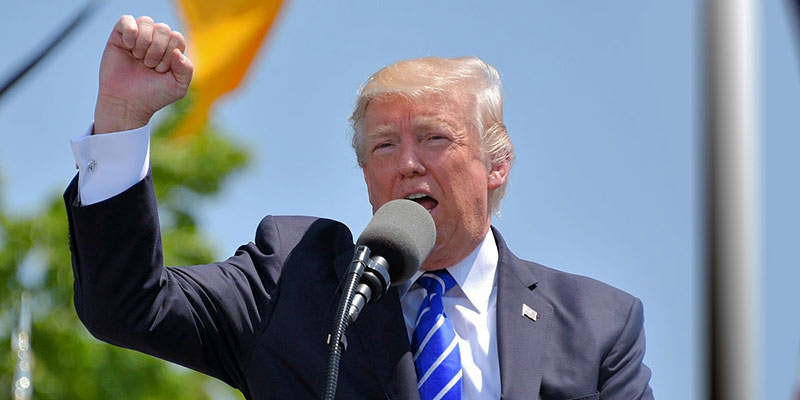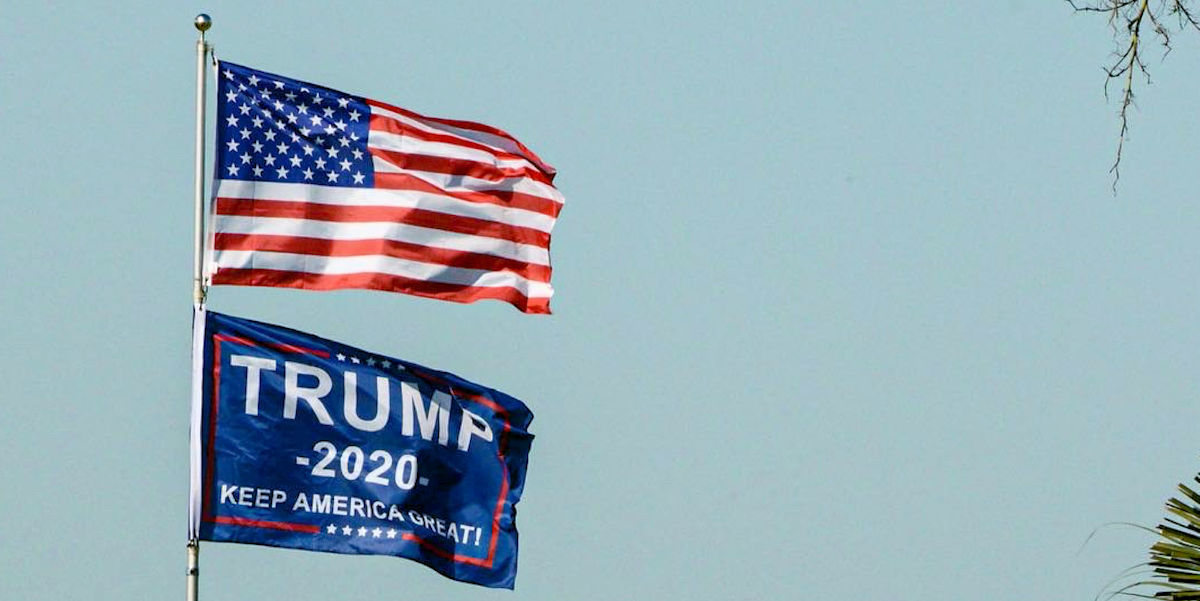Donald Trump ‘Ranked and Yanked’: A Presidential Performance Evaluation
Business and society are obsessed with metrics. Where will Donald Trump sit in the historical rankings of US Presidents? For now, it’s difficult to imagine him avoiding a place at rock bottom.

A time to judge
We’ve known since the election of 3 November that, one way or another, the Donald J. Trump administration would soon become history. Now that it’s over, how will it be remembered? How will ‘history’ (formed by public opinion, the media, and by academic and popular historians) come to judge Trump’s presidency, particularly after its final ugly months, marred by incompetent handling of the Covid-19 pandemic, groundless claims of voter fraud, and the disgraceful and tragic scenes of violence on Capitol Hill leading to a second impeachment vote?
We should be wary of snap judgements. It’s not uncommon for a U.S. President to be unpopular in office or shortly after, only for his prestige to rise in later decades. Ronald Reagan provides an excellent example. Widely lampooned during his time as absent-minded and ineffective, his stock as a ‘great national leader’ has since been purposely and successfully ‘bid up’ by Republican activists. It might come as a surprise to anyone aged over forty that Reagan now tends to be ‘rated’ inside the top ten Presidents of all time. Lyndon Johnson’s handling of the Vietnam War was so disastrous that he decided not to run for re-election in 1968. But his historical stock has also grown, partly due to the interest in Robert Caro’s very well-received biographies, and partly by growing retrospective interest in his domestic civil rights legislation and social programmes. Some in liberal circles pined for Barack Obama to have shown more of LBJ’s legendary abilities to bully Congress into passing legislation. LBJ tends to occupy a position around 15th on the all-time lists. Not bad for a President whose legacy is so strongly associated with America’s most divisive war.
The Rankings
What exactly are these presidential rankings? How are they calculated? Who gets to judge? The best-known early example of a presidential ranking system was devised by Harvard historian Arthur Schlesinger in 1948 and 1962 and published in Time magazine. His rankings were calculated by collecting the opinions of eminent historians through written correspondence. His son, Arthur Schlesinger Jr, once a highly active insider of the Kennedy circle, further developed, updated, expanded and popularised the rankings in a famous paper in 1997.
There have always been claims that these rankings are partisan. Those constructed by academic historians are often criticised for a perceived liberal, Democratic and Northeastern bias. Alternative ranking lists and methodologies have since been produced by other historians and leadership experts, and by an ever-wider range of media outlets such as CNN and C-SPAN. There are constant accusations of bias and error. But, if one discounts some of the rankings by fringe figures such as Ivan Elland of the right-libertarian think tank The Independent Institute, there is a clear consensus about presidential performance. For all their faults, the overall rankings across many surveys are remarkably similar. Washington, Lincoln and FDR are invariably the top three. Iconic but flawed characters such as Teddy Roosevelt, Dwight Eisenhower and John Kennedy come in around fifth to fifteenth. They are followed by presidents with reputations for weakness and ineffectiveness (see Gerald Ford around 28), those who served during unremarkable or uninteresting times, or characters that are simply not memorable (step forward Chester A. Arthur around 30). Down in the mid-thirties to forties there’s a rogues’ gallery of incompetents and toxic leaders: Franklin Pierce and James Buchanan (usually 40th- 43rd place), who oversaw the collapse of the Union and the beginnings of Civil War; Richard Nixon (37ish) with his Watergate plumbers and secret wars in Cambodia; and Warren Harding (40th) whose administration was infamous for the ‘Teapot Dome’ bribery scandal, fraud and extramarital affairs.
Our obsession with metrics
No leadership ranking system will ever be fully persuasive. The rankings of some will go up and down. Some of the positions are probably unfair. The presidential rankings thus mirror the vagueness (but also the popularity) of rankings, metrics and league tables in all walks of life. Think of ‘greatest of all time’ rankings for sportspersons, rock albums, books and movies. We all have our favourites and least favourites that we find in unfathomable places, or are left out altogether. More seriously, the mechanisms and logics of performance rankings increasingly affect how our lives and work are managed; right now and into the future, not retrospectively. Key Performance Indicators, performance appraisals and big data have powerful effects. The corporate world is awash with league tables of ‘most admired companies’, ‘most innovative CEOs’, and ‘most recognized brands’. Workers and organizations face batteries of KPIs, targets and performance indicators that are supposed to objectively measure their ‘performance’. The techniques, systems and pathologies of these approaches have advanced well into the public and third sector. League tables of schools, universities and police forces. Ranking lists for doctors. Response time targets for ambulance services.
These ‘real-time’ rankings pose as scientific, rational and objective. But they are often nothing of the sort. They are riven with problems. The data they are based on can be questionable, especially when so much of work involves intangibles and grey areas. Setting goals based on metrics can distort behaviour and create perverse outcomes. Manipulation and ‘gaming’ of stats is widespread. Setting targets and measuring progress against them can be unfair and arbitrary. The energy services company Enron was hailed by much of the business press for its ‘bold’ and ‘innovative’ use of employee performance measurement which separated workers into a ‘forced ranking’ of 20-70-10. In an approach that came to be known as ‘rank and yank’ the top 20 per cent were lavished with bonuses, the middle 70 were cogs in a wheel, and the bottom 10 faced dismissal. These brutal, blunt approaches to employee motivation and reward reflected the toxic greed of the senior leadership who led Enron to disaster.
This takes us back to Trump’s ‘corporate-style’ White House. A major part of Trump’s appeal was his persona as a ‘business leader’, rather than as a tired, stale, boring and corrupt politician. He was recognizable. He was ‘a winner’. He was brash and outrageous. The outmanoeuvring and domineering of his Republican nominees was as impressive as it was brutal. For decades he had cultivated for himself an image equal parts 1980s ‘dealmaker’ and 1990s corporate downsizer. He trashed his way through the Washington establishment in much the same way Al ‘Chainsaw’ Dunlap cut and slashed through tired old companies like Sunbeam Corporation. The historical presidential rankings are little more than a parlour game, and real-time KPIs are problematic. But there is poetic justice in applying a corporate-style performance evaluation to a President who made the image and style of U.S. business central to his ‘leadership’ claims.
Trump’s performance appraised
So let’s give Trump a performance appraisal. What did he actually do? His supporters will note that he kept to some parts of his campaign promises. There were the tax cuts that any Republican president will typically enact. There was some renovation of the southern border wall. Legal protections for immigrants were curtailed. He rolled back dozens of domestic environmental regulations and pulled the USA out of the Paris Agreement on climate change. He appointed three highly conservative justices to the Supreme Court, something likely to be a major Trump legacy. He was unable, however, to repeal Obama’s Affordable Care Act. Instead, his approach was to pick away at the seams of the ACA with the aim of sabotaging it.
Trump was always much better at campaigning than governing. Although hardly unique in struggling to develop a successful working relationship with Congress, his administration barely tried. Instead, he’d focus his energies on Executive Orders. He achieved very little of note in terms of passing legislation or enacting reforms. Perhaps the only piece of legislation that could be considered ‘historic’ would be the establishment of 12 weeks parental leave for 2 million federal employees; a little-reported policy tucked into the massive National Defense Authorization Act of December 2019 that created the U.S. Space Force. A charitable reading of the Trump Presidency is that he did not get the country embroiled in armed conflict, something increasingly viewed across the political spectrum as something to avoid at all costs. The Pentagon top brass was often alarmed at the President’s chaotic and idiosyncratic leadership approach, but Trump was, at least, smart enough to avoid committing U.S. troops to overseas confrontations. Today, armed conflict increasingly takes the form of long-run, complex, unwinnable, and unpopular insurgencies and ‘wars among the people’. A bad deal. Not a winning proposition.
There is very little else to note. The most memorable elements of Trump are derived from the uniquely strange style of his Presidency. Foremost among this was the way in which his Presidency ‘did business’; wilful attrition of Cabinet members and top agency personnel, and approaches to media relations and international diplomacy that were always belligerent and combustible, but rarely truthful or effective. The mishandling of the Covid-19 crisis was disastrous. Simple clinical advice such as mask-wearing and social distancing was undermined by Trump’s culture wars against ‘liberals’ and the ‘globalist’ World Health Organization. Support from white supremacists and conspiracy groups was actively cultivated. Many of his closest insiders and backers were involved in misconduct of various kinds. The entire tone of the Trump era is eye-catching and unusual, quite distinct from that normally considered ‘presidential’. A belligerent obstinacy towards professional expertise and political norms was central to his administration’s identity. History is unlikely to forget this. The most ‘historic’ things about his presidency won’t be any policy achievements. Instead, it will be the disastrously weak response to the Covid-19 crisis, his clownish, reckless conduct and the two impeachments, in particular the second on the charge of ‘incitement of insurrection’.
Let’s not forget that over 74 million people voted for his re-election and the Senate has now twice failed to reach the two-thirds majority required to convict him on the impeachment charges. Many of his supporters continue with the line that Joe Biden will bring the dreaded ‘radical socialism’ to America. Trump himself is now a strange, lurking political presence. It is an open question, and a fascinating one, as to what Trump and his family might do next. Will any of them make a comeback or will the Trump political brand fade into obscurity? No doubt other figures will adopt Trumpist, populist narratives. I’m certain we’ve not heard the last of ‘taking America back’, ‘draining the swamp’ and ‘making America great again’.
But, for now, The Donald has been ranked and yanked by the US electorate, and twice by the House of Representatives. We’ll have to wait and see where he will be placed on the 45 rungs of the presidential leadership ladder. Undoubtedly others will reappraise and re-evaluate his ‘legacy’ in years to come. But right now, it seems as if there is a place reserved for him right at the foot of this list.

Photo by Dalton Caraway on Unsplash
Notes to editors:
About the author
Featured researcher

Professor Leo McCann
Chair in Management
Leo's research and teaching brings historical and sociological perspectives onto management problems, especially conflicts between professional discretion and centralisation.
leo.mccann@york.ac.uk @LeoMc76